Abstract
A method has been developed to determine the adducts formed upon interaction of cis- and trans-diamminedichloroplatinum(II) (cis- and trans-DDP) with DNA. After 5 h at 50 degrees C in the dark, the amount of cis-DDP bound to salmon sperm DNA was larger than the amount of the trans-isomer. After enzymatic degradation with deoxyribonucleases to nucleotides and Pt-containing (oligo)nucleotides, the various products were separated by DEAE chromatography and analyzed for Pt by flameless AAS. Indications were obtained for the presence of nucleotides containing monofunctionally bound Pt and of adducts originating from interstrand DNA crosslinks. DEAE chromatography of digests of cis-DDP-treated DNA yielded a product with overall charge -1, which was identified with NMR and CD as cis-[Pt(NH3)2-d(pGpG)], the oligonucleotide derived from intrastrand crosslinks between two adjacent guanines. Another major peak contained Pt-oligonucleotides with overall charge -2, which could be derived from intrastrand crosslinks between two guanines at sites with pGpXpG (X=T,C,A or G) base sequences.
Full text
PDF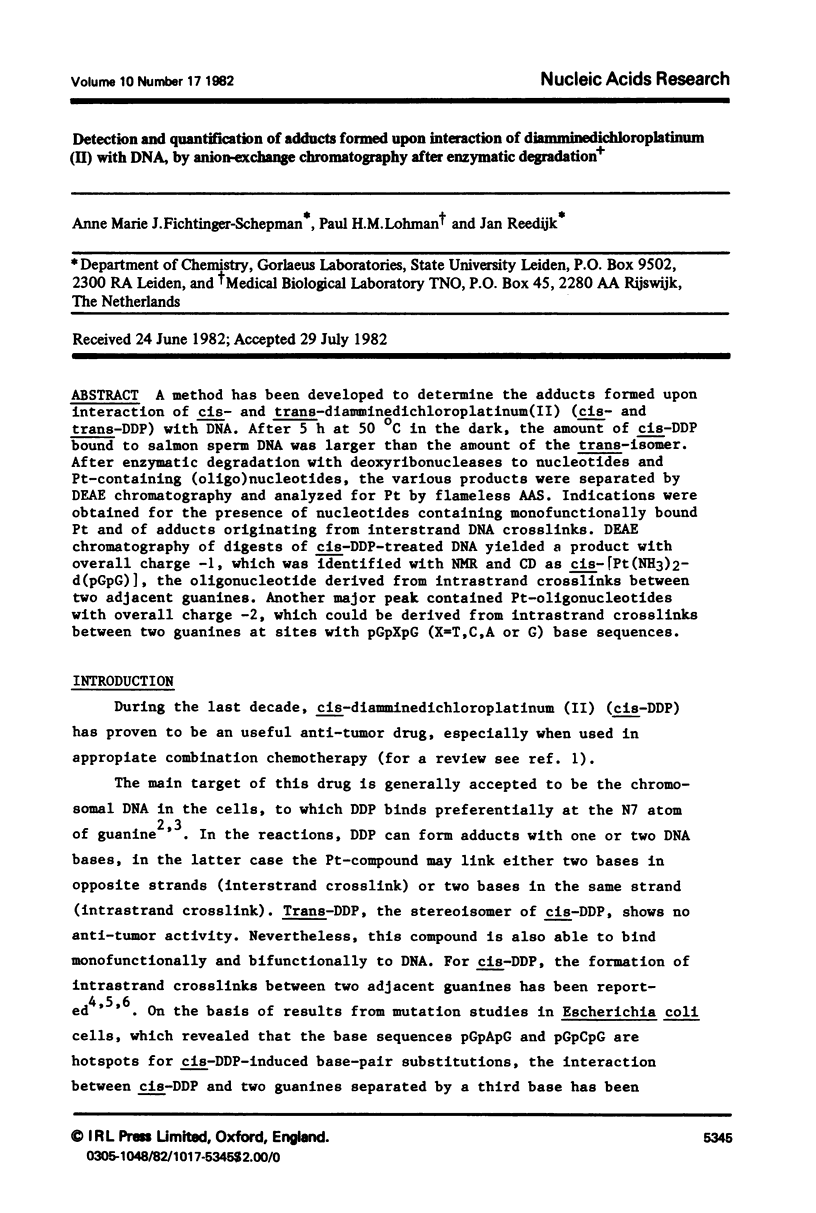
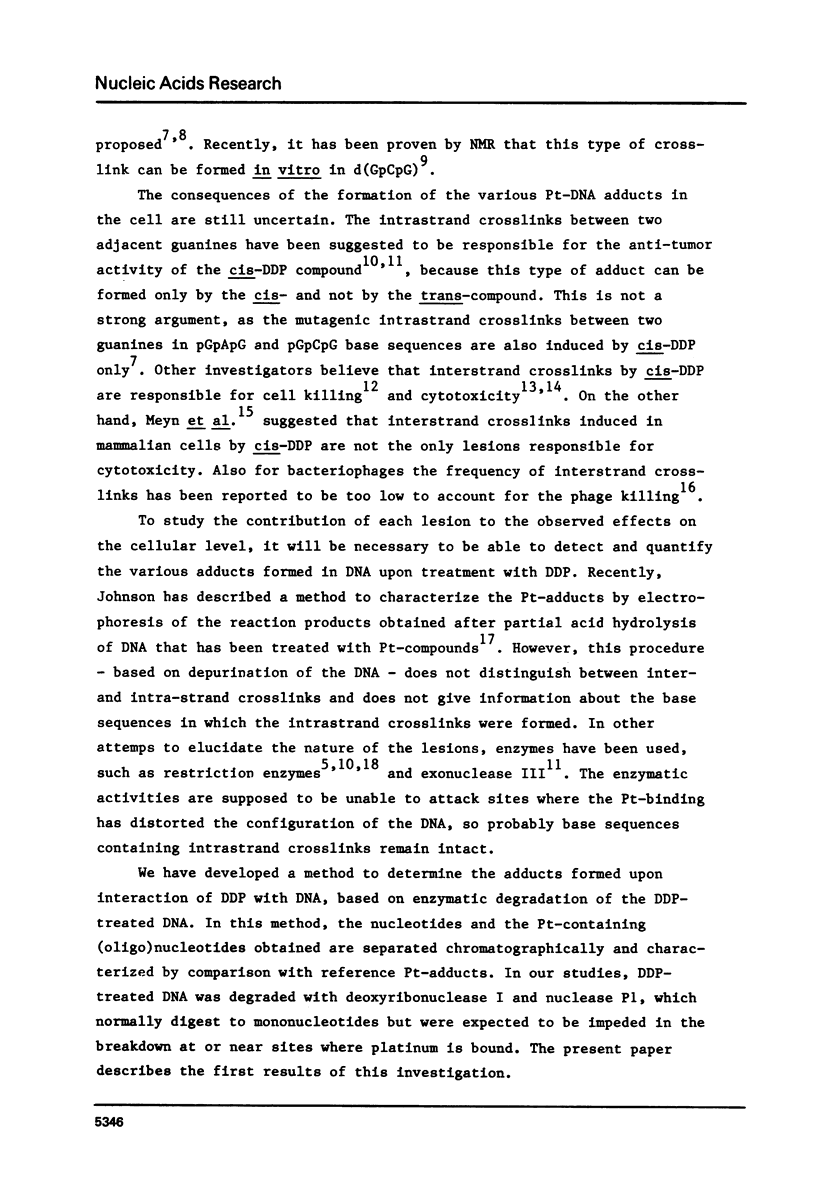
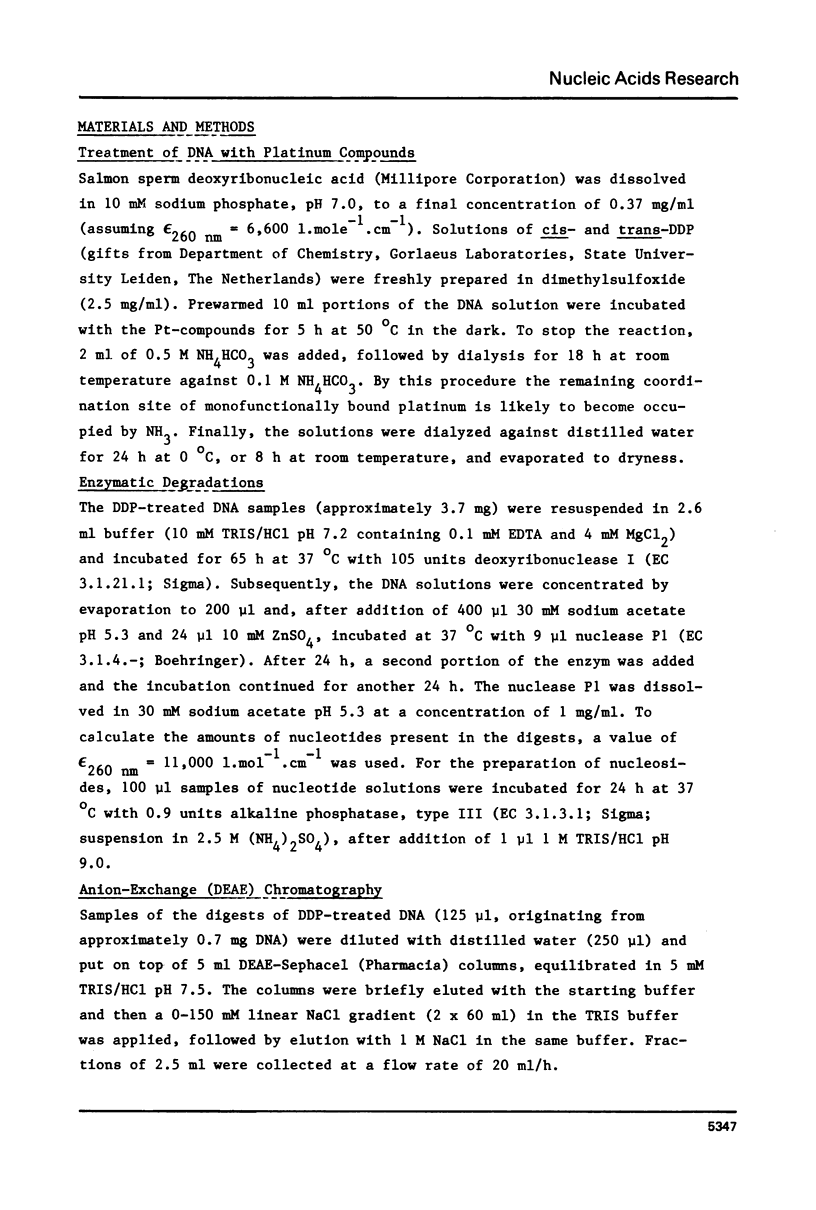
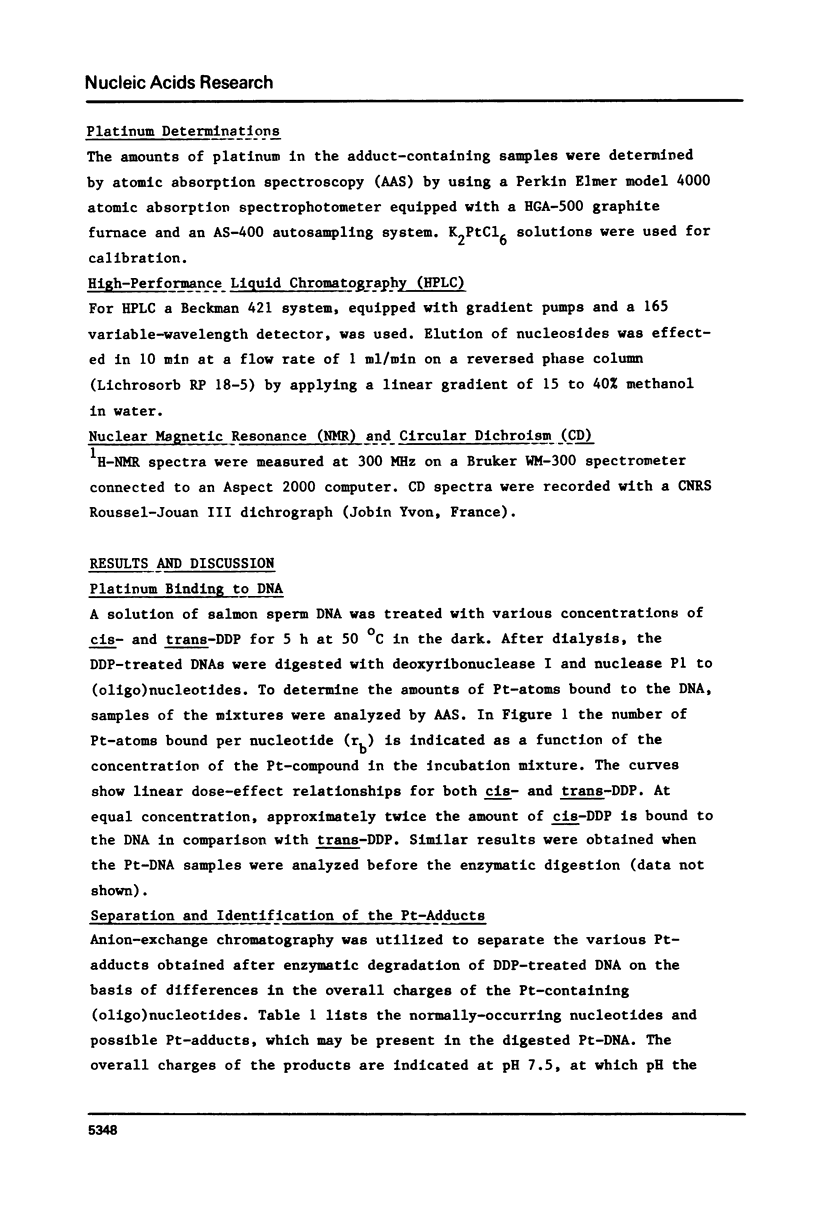
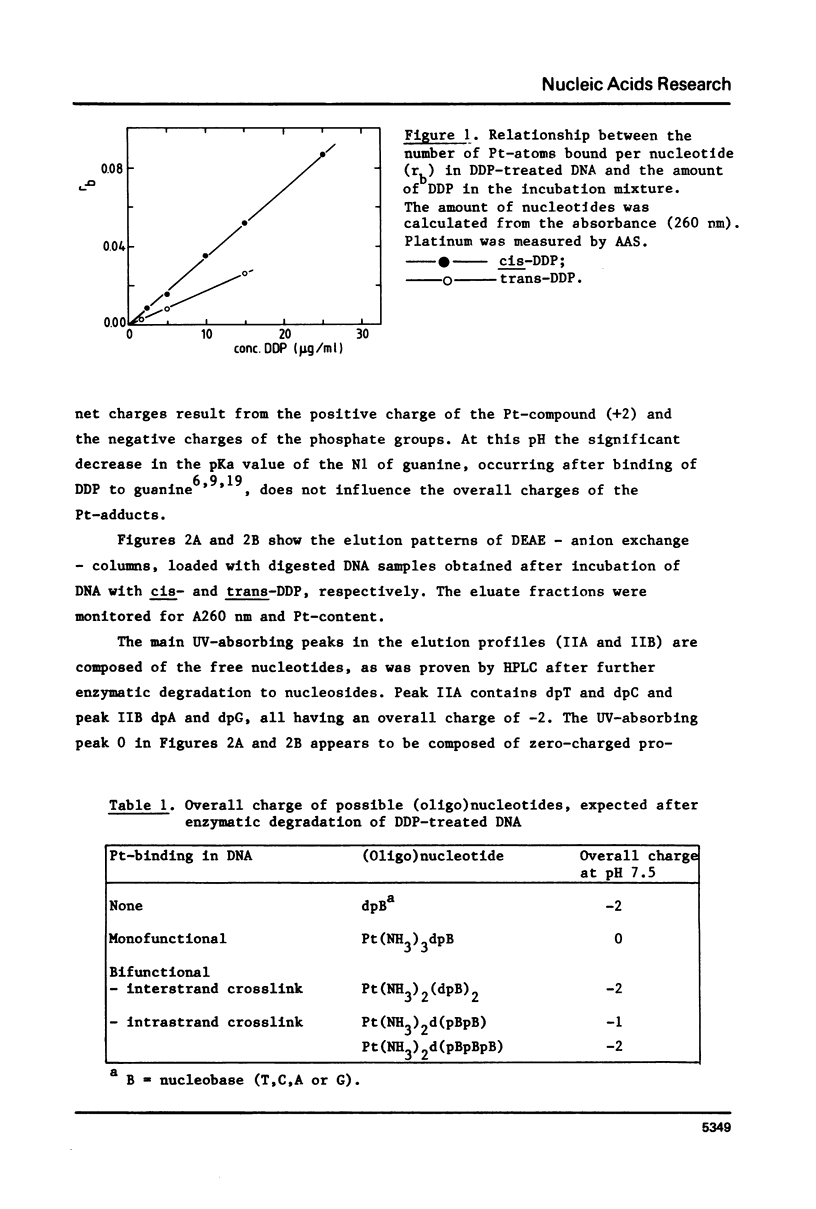
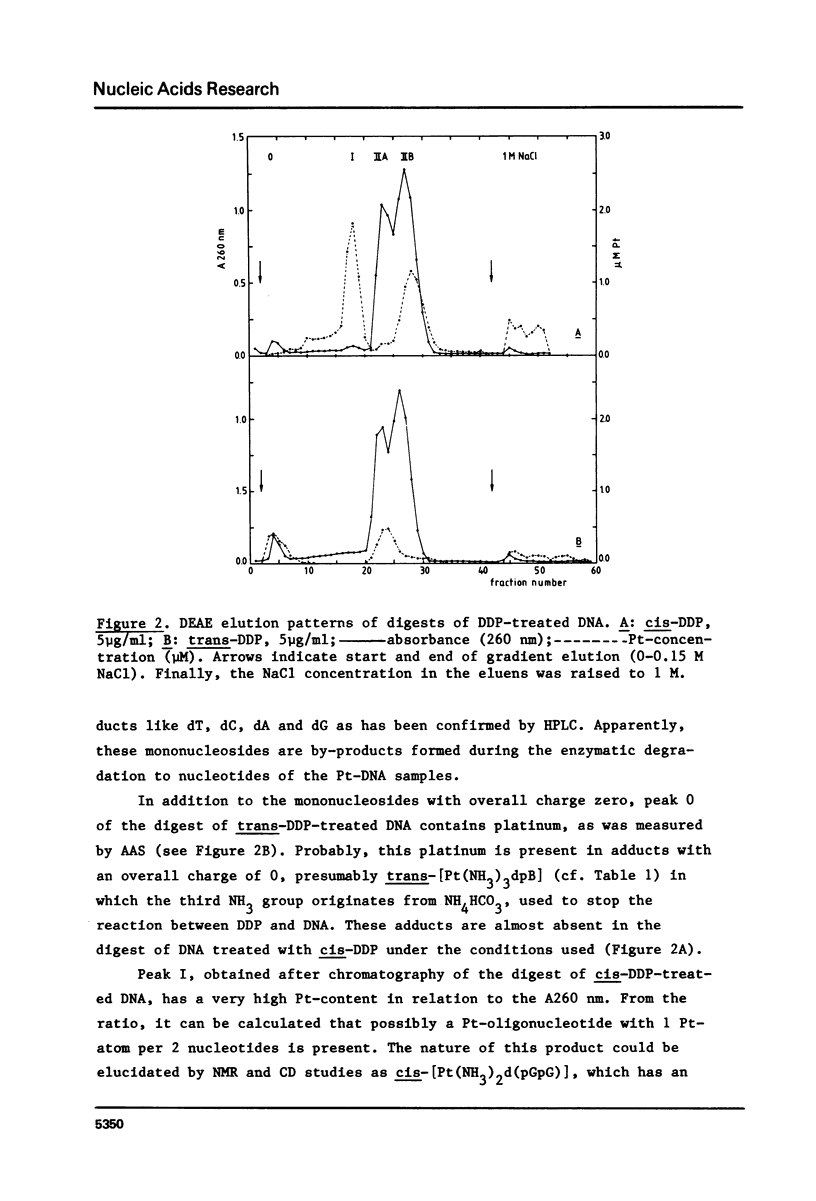
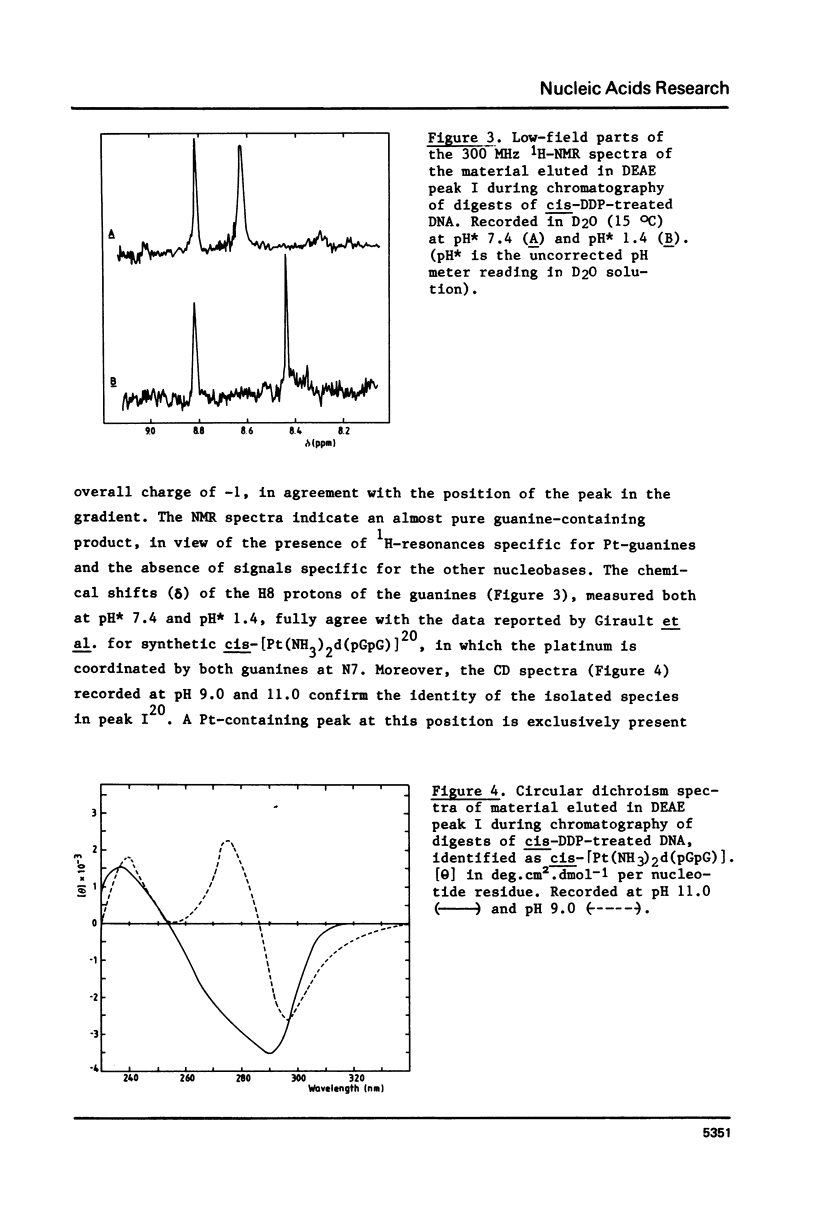
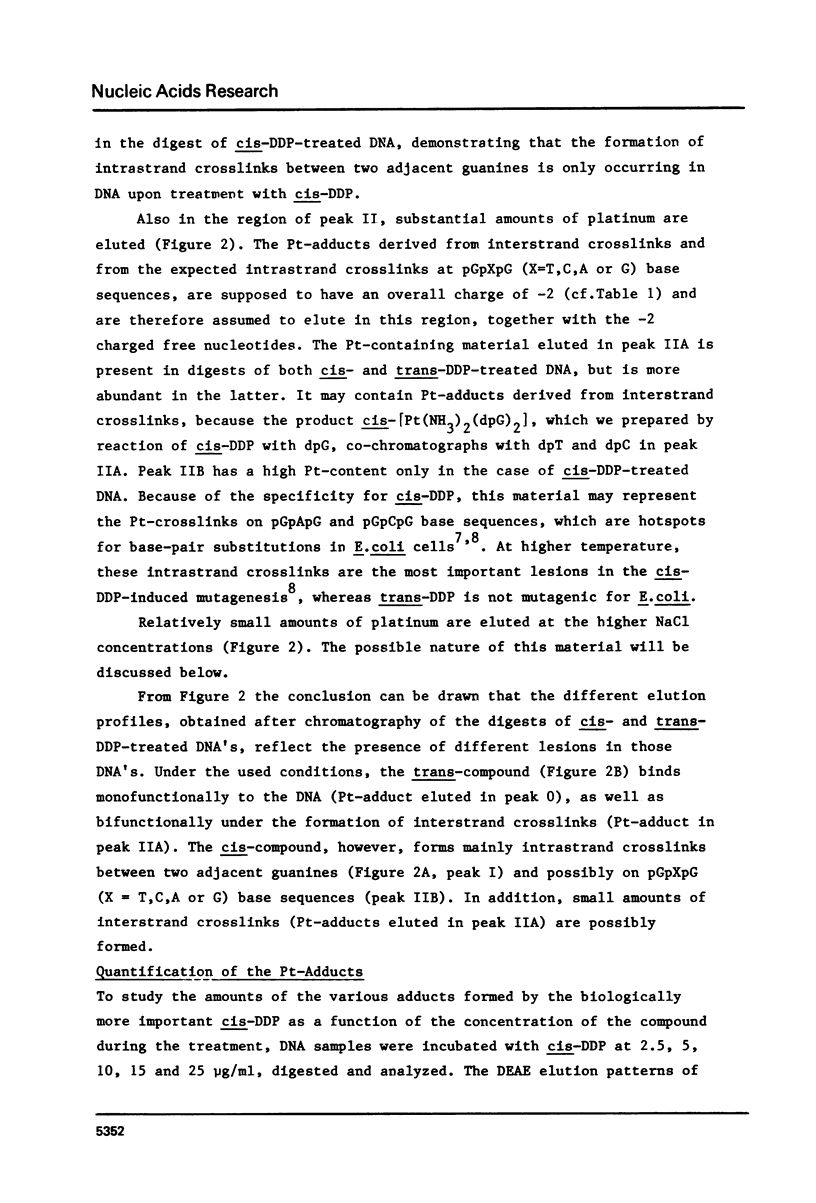
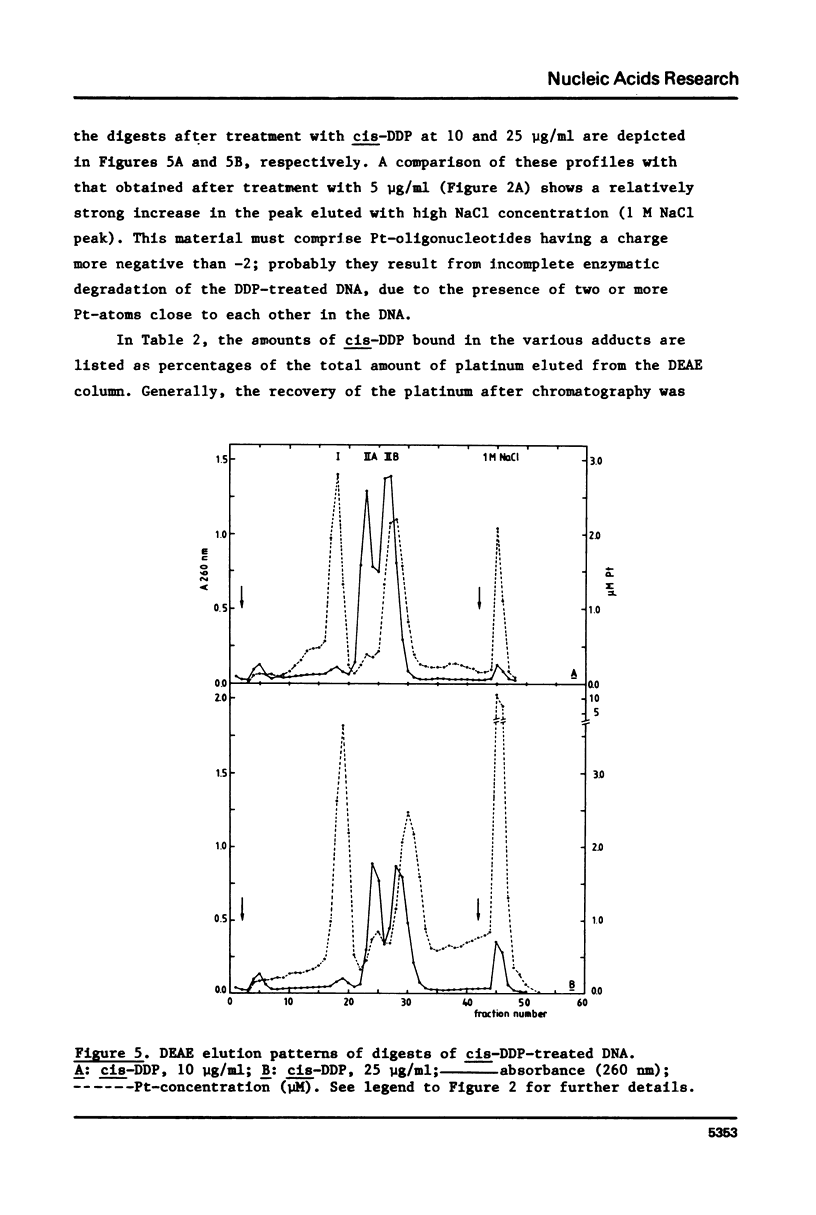
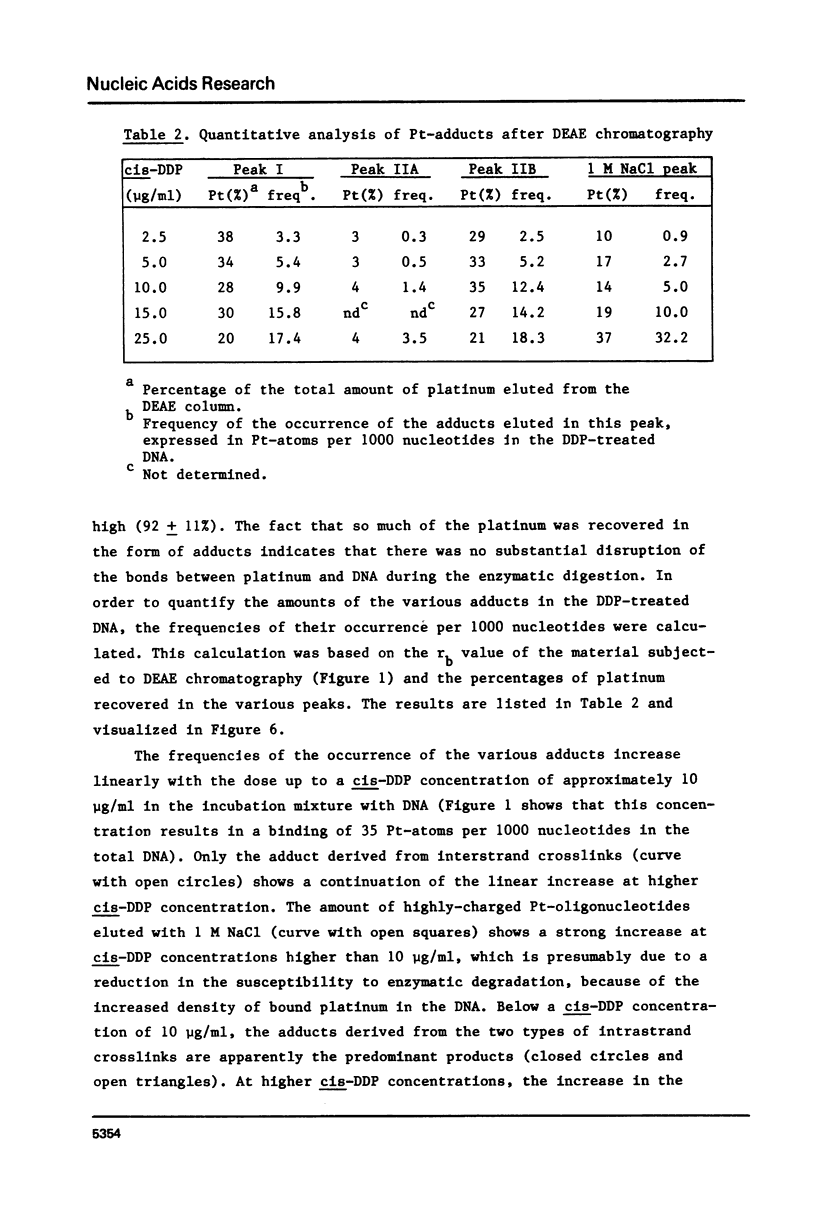
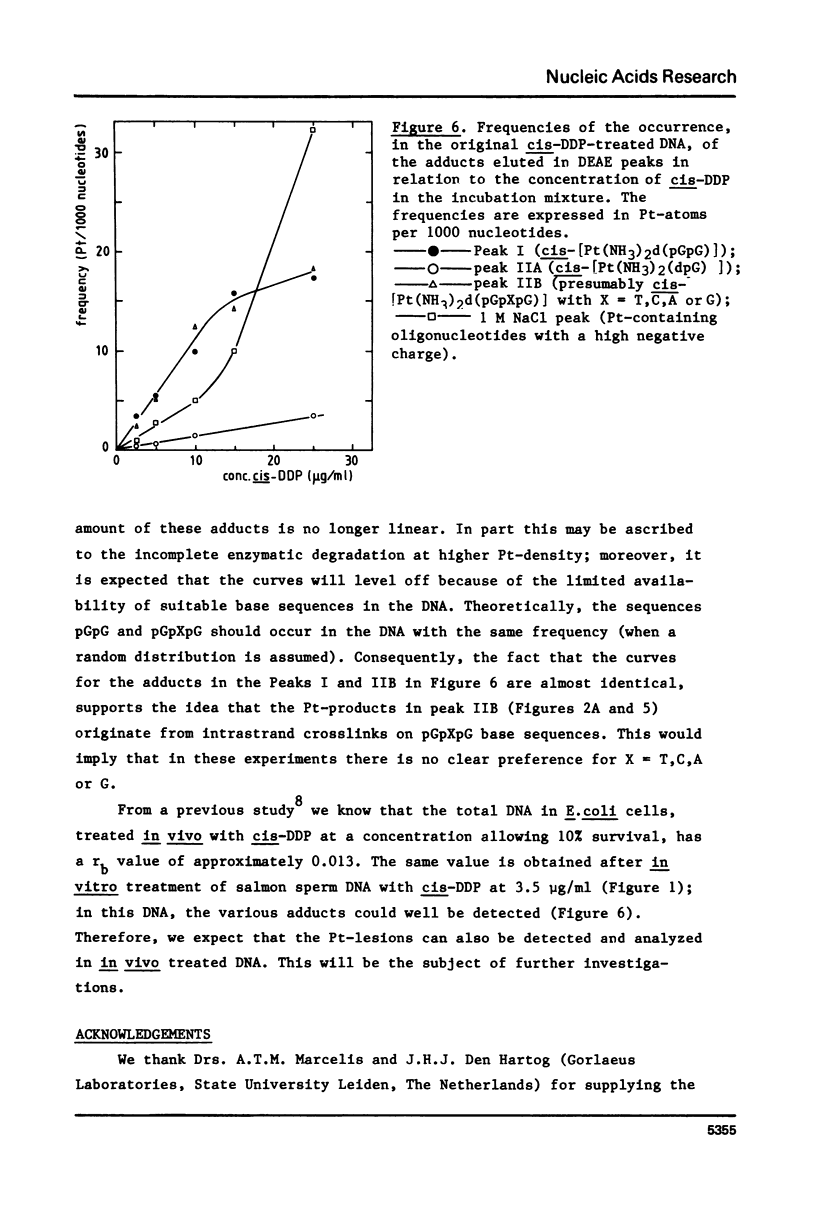
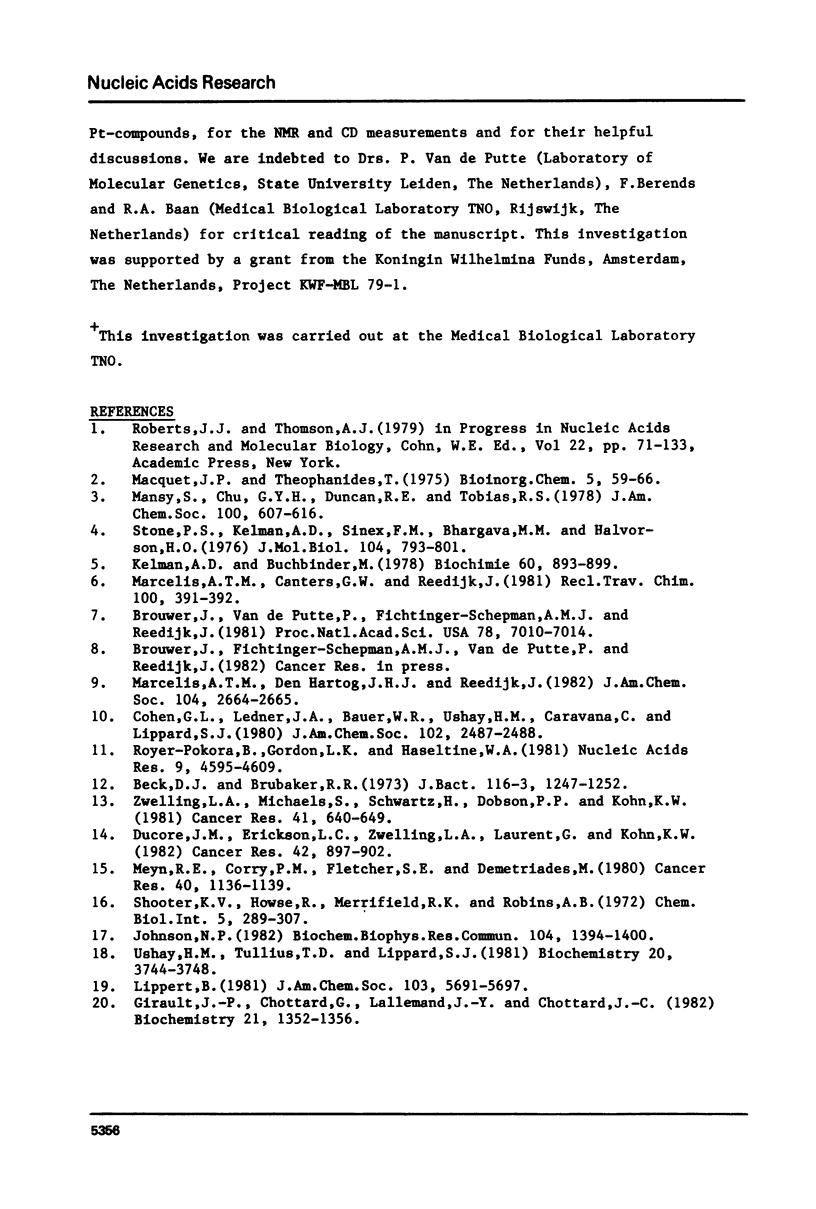
Selected References
These references are in PubMed. This may not be the complete list of references from this article.
- Beck D. J., Brubaker R. R. Effect of cis-platinum(II)diamminodichloride on wild type and deoxyribonucleic acid repair deficient mutants of Escherichia coli. J Bacteriol. 1973 Dec;116(3):1247–1252. doi: 10.1128/jb.116.3.1247-1252.1973. [DOI] [PMC free article] [PubMed] [Google Scholar]
- Brouwer J., van de Putte P., Fichtinger-Schepman A. M., Reedijk J. Base-pair substitution hotspots in GAG and GCG nucleotide sequences in Escherichia coli K-12 induced by cis-diamminedichloroplatinum (II). Proc Natl Acad Sci U S A. 1981 Nov;78(11):7010–7014. doi: 10.1073/pnas.78.11.7010. [DOI] [PMC free article] [PubMed] [Google Scholar]
- Ducore J. M., Erickson L. C., Zwelling L. A., Laurent G., Kohn K. W. Comparative studies of DNA cross-linking and cytotoxicity in Burkitt's lymphoma cell lines treated with cis-diamminedichloroplatinum(II) and L-phenylalanine mustard. Cancer Res. 1982 Mar;42(3):897–902. [PubMed] [Google Scholar]
- Girault J. P., Chottard G., Lallemand J. Y., Chottard J. C. Interaction of cis-[Pt(NH3)2(H2O)2](NO3)2 with ribose deoxyribose diguanosine phosphates. Biochemistry. 1982 Mar 16;21(6):1352–1356. doi: 10.1021/bi00535a038. [DOI] [PubMed] [Google Scholar]
- Johnson N. P. Preliminary characterization of the adducts formed between the antitumor compounds cis-Pt(NH3)2Cl2 and DNA. Biochem Biophys Res Commun. 1982 Feb 26;104(4):1394–1400. doi: 10.1016/0006-291x(82)91404-8. [DOI] [PubMed] [Google Scholar]
- Macquet J. P., Theophanides T. DNA-platinum interactions in vitro with trans- and cis-Pt(NH3)2Cl2. Bioinorg Chem. 1975;5(1):59–66. doi: 10.1016/s0006-3061(00)80221-5. [DOI] [PubMed] [Google Scholar]
- Meyn R. E., Corry P. M., Fletcher S. E., Demetriades M. Thermal enhancement of DNA damage in mammalian cells treated with cis-diamminedichloroplatinum(II). Cancer Res. 1980 Apr;40(4):1136–1139. [PubMed] [Google Scholar]
- Roberts J. J., Thomson A. J. The mechanism of action of antitumor platinum compounds. Prog Nucleic Acid Res Mol Biol. 1979;22:71–133. doi: 10.1016/s0079-6603(08)60799-0. [DOI] [PubMed] [Google Scholar]
- Royer-Pokora B., Gordon L. K., Haseltine W. A. Use of exonuclease III to determine the site of stable lesions in defined sequences of DNA: the cyclobutane pyrimidine dimer and cis and trans dichlorodiammine platinum II examples. Nucleic Acids Res. 1981 Sep 25;9(18):4595–4609. doi: 10.1093/nar/9.18.4595. [DOI] [PMC free article] [PubMed] [Google Scholar]
- Shooter K. V., Howse R., Merrifield R. K., Robins A. B. The interaction of plantinum II compounds with bacteriophages T7 and R17. Chem Biol Interact. 1972 Oct;5(5):289–307. doi: 10.1016/0009-2797(72)90069-5. [DOI] [PubMed] [Google Scholar]
- Stone P. J., Kelman A. D., Sinex F. M. Resolution of alpha, beta and gamma DNA of Saccharomyces cerevisiae with the antitumor drug cis-Pt (NH3)2CL2. Evidence for preferential drug binding by GpG sequences of DNA. J Mol Biol. 1976 Jul 15;104(4):793–801. doi: 10.1016/0022-2836(76)90182-0. [DOI] [PubMed] [Google Scholar]
- Ushay H. M., Tullius T. D., Lippard S. J. Inhibition of the BamHI cleavage and unwinding of pBR322 deoxyribonucleic acid by the antitumor drug cis-dichlorodiammineplatinum(II). Biochemistry. 1981 Jun 23;20(13):3744–3748. doi: 10.1021/bi00516a012. [DOI] [PubMed] [Google Scholar]
- Zwelling L. A., Michaels S., Schwartz H., Dobson P. P., Kohn K. W. DNA cross-linking as an indicator of sensitivity and resistance of mouse L1210 leukemia to cis-diamminedichloroplatinum(II) and L-phenylalanine mustard. Cancer Res. 1981 Feb;41(2):640–649. [PubMed] [Google Scholar]


